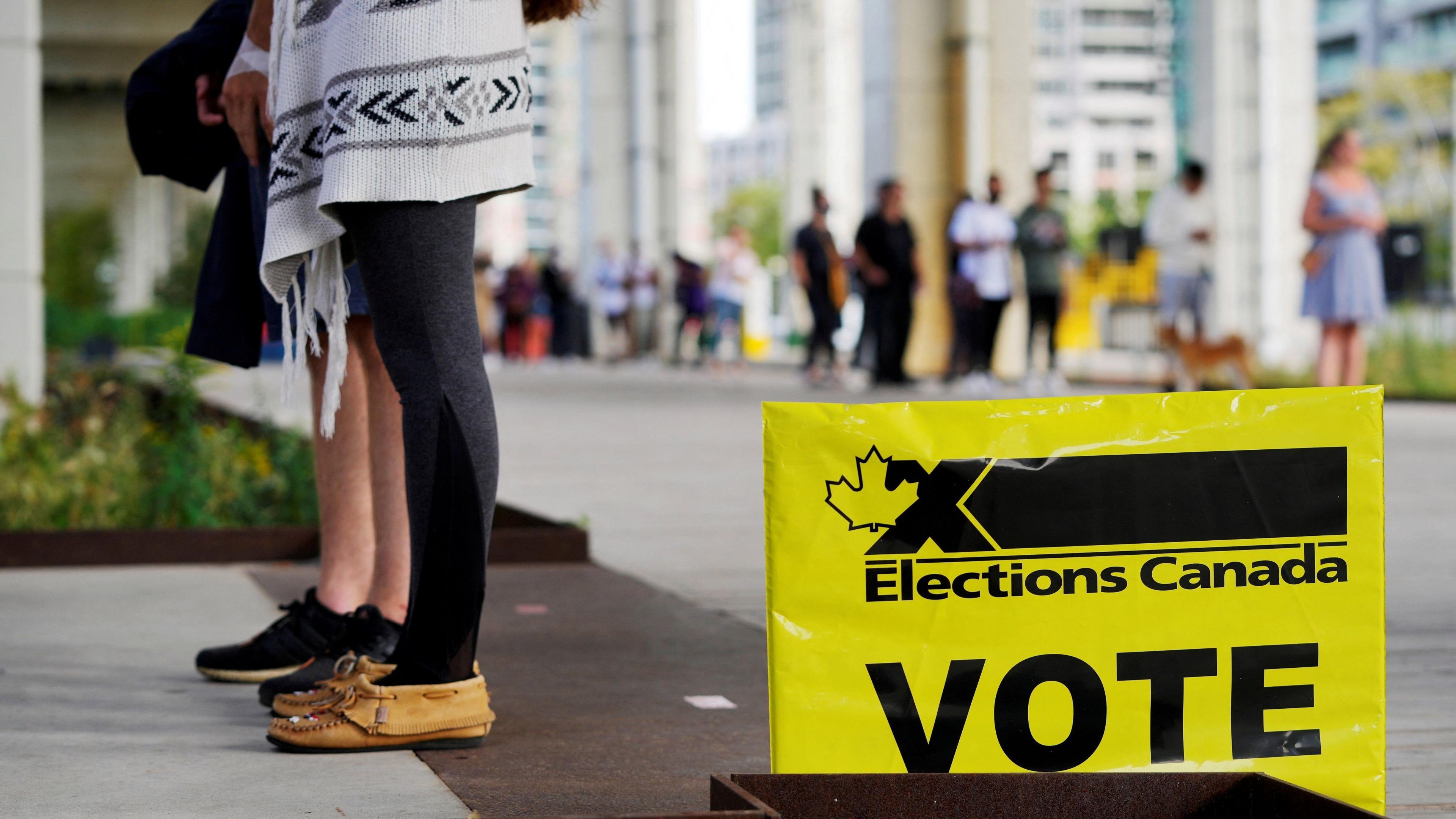Carney's Liberals won. What happens next?
Watch: Liberal Party wins - how Canada's election night unfolded
- Published
The Liberal Party has won a fourth successive mandate in Canada, staging an unexpected comeback.
In his victory speech, Prime Minister Mark Carney vowed to stand up to the US, which he accused of trying to "break" Canada.
Carney is a relative political newcomer, having replaced Justin Trudeau as leader of the Liberals two months ago.
So what happens next?
Has the winner been declared?
Yes.
Canadian media called the election for the Liberals shortly after polls closed nationally at 22:00 EDT (03:00 BST) on Monday, projecting that Mark Carney's Liberal Party was on its way to win enough seats in the House of Commons to form a government.
While the CBC projected the Liberals will have a minority government, the counting of ballots is ongoing. A handful of close races remains to be called.
Federal election officials are required to count ballots by hand in front of witnesses. Ballots are tallied only after polls close in each location where the votes were cast.
These projections are based on initial results from Elections Canada, which runs the country's federal elections.
Officials double-check vote totals after the election.
Is Mark Carney already the prime minister?
Liberal leader Mark Carney does not need to be sworn in again as prime minister. Instead, he will continue doing his job, along with his Cabinet ministers.
Should Carney decide to reshuffle his Cabinet, there will be a ceremony with the governor general, but until then, the ministers stay in their posts.
Carney may indeed choose to shuffle his Cabinet after bringing in a team when he became prime minister last month.
When Parliament reconvenes after an election, expect the swearing-in of members and the election of the Speaker.
There will also be a Speech from the Throne, which opens every new session of Parliament and allows a government to introduce its goals and priorities.
Do the Liberals have a majority government?
No.
Around 16:00 EDT (21:00 BST) on Tuesday the CBC projected Liberals would fall three seats short of the 172 needed for a majority in the House of Commons.
The Liberals are now projected to form a minority government with Carney as prime minister. They will have to strike deals with the other parties to survive no-confidence votes and pass legislation in Parliament.
The Bloc Québécois and the NDP could play a role here, as they can help the Liberals pass their legislation.
Bloc Québécois leader Yves-Francois Blanchet suggested Carney may benefit from a short period of stability with the help of other parties.
Blanchet urged a "truce" among parties while Canada negotiated trade with the US president, saying Canadians wanted stability in unstable times.
He said he does not see any scenario "other than collaboration for a period of slightly over a year".
The Conservatives are on track to once again form the Official Opposition.
What has Carney said he will do as PM?
One of his priorities is to navigate the relationship with US President Donald Trump.
When the pair spoke in late March, Carney and Trump agreed they would begin negotiations about a new economic and security relationship right after the election.
When Parliament returns, it's possible we see the Liberals quickly introduce legislation focused on securing Canada's economy in the face of US tariff headwinds.
That could include a promised tax cut for lower- and middle-class Canadians, and moving ahead with a "one project, one review" process to speed up approval for key energy and mining proposals.
The Liberals have said they want to make Canada a "clean and conventional energy" superpower.
They also committed to putting C$5bn into a trade diversification fund.
The new government also will need to focus on the June G7 summit, which Canada is hosting in Alberta.
Watch: Canadians react to the election result across the country

People line up outside a polling station to vote in Canada's federal election
What's next for Conservatives and Pierre Poilievre?
Conservative leader Pierre Poilievre made significant inroads with the party's vote share, securing roughly 41% of the vote, according to Election Canada.
That would be the highest the party has won in decades.
They are currently projected to have won 144 seats - up from 120 at dissolution, when the election was called.
But there are some bitter pills to swallow - Poilievre himself is projected to have lost his seat in Ontario.
And with voters switching from NDP and the Bloc mostly to the Liberals, those expanded Conservative numbers weren't enough to win.
This will be a tough loss for them, being in such a strong position only a few months ago when they had a clear path to victory.
They will now need to figure out a way forward after a series of electoral defeats.
And it is hard to see Poilievre staying on at the helm, which would mean a fourth leader since the Liberals swept the 2015 election.
